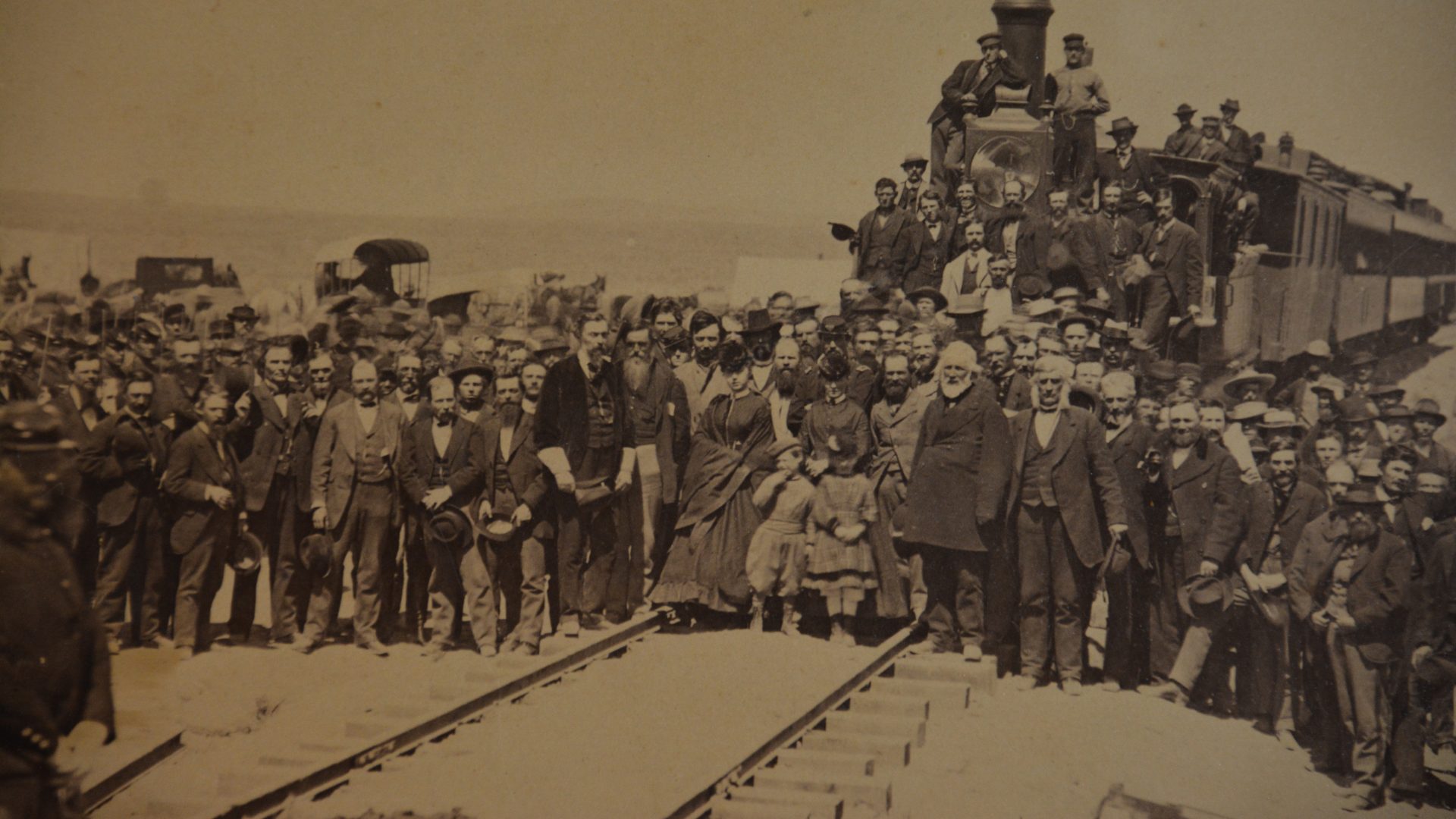In 1871, prominent photographer Timothy O’Sullivan joined Lt. George M. Wheeler’s geological survey known as the Wheeler Expedition. The Wheeler Expedition was a military expedition that sought to map and explore the regions of Utah, Colorado, New Mexico, and Arizona. At the end of the survey, O’Sullivan was able to produce a large collection of photographs that featured landscapes, military forts, Native Americans, and ancient ruins as their subjects. O’Sullivan’s seemingly mundane photographs provide historians an interesting window to the past. His photographs illustrate the deep and changing relationships humans have with the land and cultural transformations that left their mark upon the landscape.
In demonstrating how the Navajo and Zuni peoples utilized the land, O’Sullivan marked a distinct difference in the relationship with the land between Native peoples and Euro-Americans. “Two Navajo Weaving” shows Navajo women using a weaving loom made of natural materials, contrasting the industrialized eastern United States and its production practices. “Indian Pueblo of Zuni, New Mexico” also demonstrates the cultural juxtaposition of land utilization among Native Americans and the Euro-Americans as the Zuni pueblos have a unique architectural design that is directly influenced by the Zuni desert lifestyle. Seemingly unlike the Euro-Americans, the relationship between the Natives and the land is reciprocal, under the Navajo principle, “Diné bikéyah” which means the Land of the People.
Contrasting the Euro-American domination of land, Native Americans have deep spiritual traditions that tie and make them equal with the land. O’Sullivan illustrates these two contrasting relationships in his photographs “Navajo Dance” and “Roman Catholic Church in Plaza of Guadaloupe.” In the photo “Navajo Dance,” a group of Navajo performs a traditional dance of healing, hoping to restore the balance of the earth. In contrast to the ceremony of healing, a U.S military fort is pictured in the background physically dominating the landscape and the Native Americans. In the photo,“Roman Catholic Church in Plaza of Guadaloupe,” a Roman Catholic Church dominates the photo illustrating the government’s need not to only dominate the land on which the Native lives but also the cultural and religious practices of the Navajo people.
Within O’Sullivan’s photographs, the idea of the fantasy surrounding the American West is acknowledged. There was an enchantment in the unknown aspects of the American West which was perpetuated by images of ancient ruins. O’Sullivan captures the interest in the mysterious in the photographs of the ruins of Canon De Chelle and Pueblo San Juan. O’Sullivan remarked that the Native Americans currently living there did not know to whom the ruins belonged, therefore continuing the mystery. The curiosity in the unknown is reflected in the photograph of the Indian Pueblo of Zuni, which depicts architectural stylings differing from preconceived notions of Native American architecture.
O’Sullivan demonstrates a changing landscape in the West as a result of Euro-American expansion. The land utilization practices of the Native Americans and the Euro-Americans created a contested landscape, each illustrating their respective cultural identity with respect to the environment.






